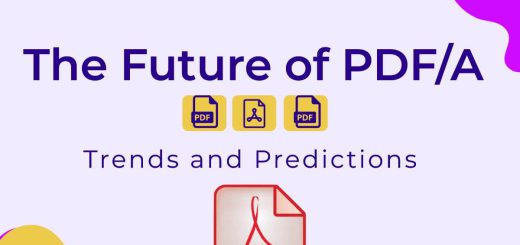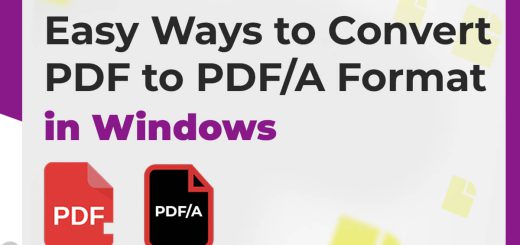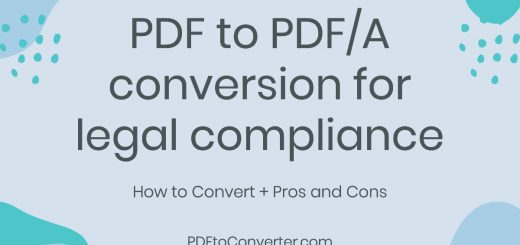The Importance of PDF/A for Archiving and Long-Term Preservation
Posted on: February 16, 2023 @ 12:41 pm
Learn why PDF/A is becoming the go-to file format for digital preservation and how it ensures that important documents remain accessible and intact over time. Discover the differences between PDF and PDF/A, and why PDF/A’s standardized format and restrictive features make it the ideal choice for archiving and long-term preservation of electronic documents.
PDF/A, the archival version of Portable Document Format (PDF), is a popular standard for preserving digital documents in the long-term. With the increasing importance of digital data in our daily lives, the need for reliable and long-lasting archiving solutions has become paramount. In this article, we’ll explore the importance of PDF/A for archiving and long-term preservation.
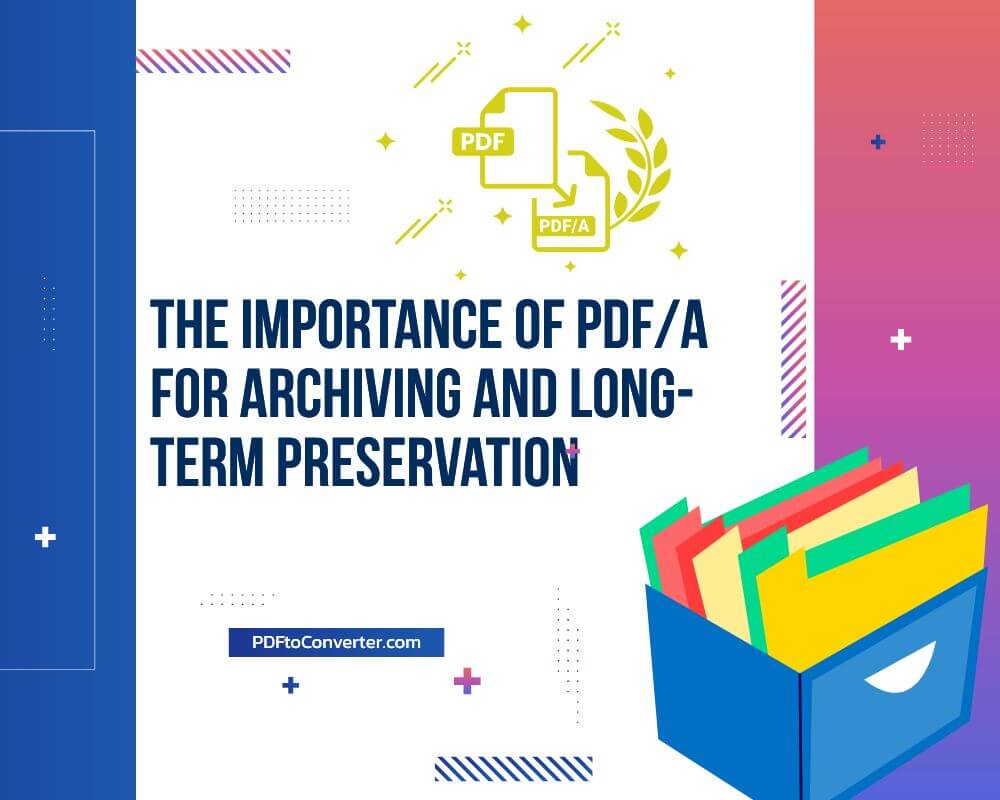
The Importance of PDF/A for Archiving and Long-Term Preservation
What is PDF/A?
PDF/A is a standard format for preserving digital documents. It was first introduced in 2005 as a subset of the PDF specification, with the goal of creating a format that is self-contained and can be rendered on any computer system. PDF/A has since become the preferred standard for archiving digital documents.
PDF/A, also known as PDF/Archival, is a version of the Portable Document Format (PDF) that is designed specifically for long-term archiving and preservation of digital documents. With the increasing importance of digital data in our daily lives, the need for reliable and long-lasting archiving solutions has become paramount. PDF/A has emerged as a popular standard for preserving digital documents, and its importance in the field of archiving cannot be overstated.
What is long-term preservation PDF A?
Preserving digital documents is critical in today’s digital age. With so many file formats to choose from, it can be challenging to determine which one is best for long-term preservation. PDF/A is a file format that was specifically designed for archiving and long-term preservation, making it an excellent choice for important documents. What makes PDF/A different from other formats is its ability to ensure the document’s content remains intact over time, even as technology changes. This is especially crucial for government documents that need to be preserved for many years. While there are other formats that support the archival of important documents, PDF/A is often preferred due to its ability to ensure the document’s long-term preservation. When it comes to archiving and long-term preservation, it’s essential to choose the right format to ensure that the document’s content is preserved for future generations.
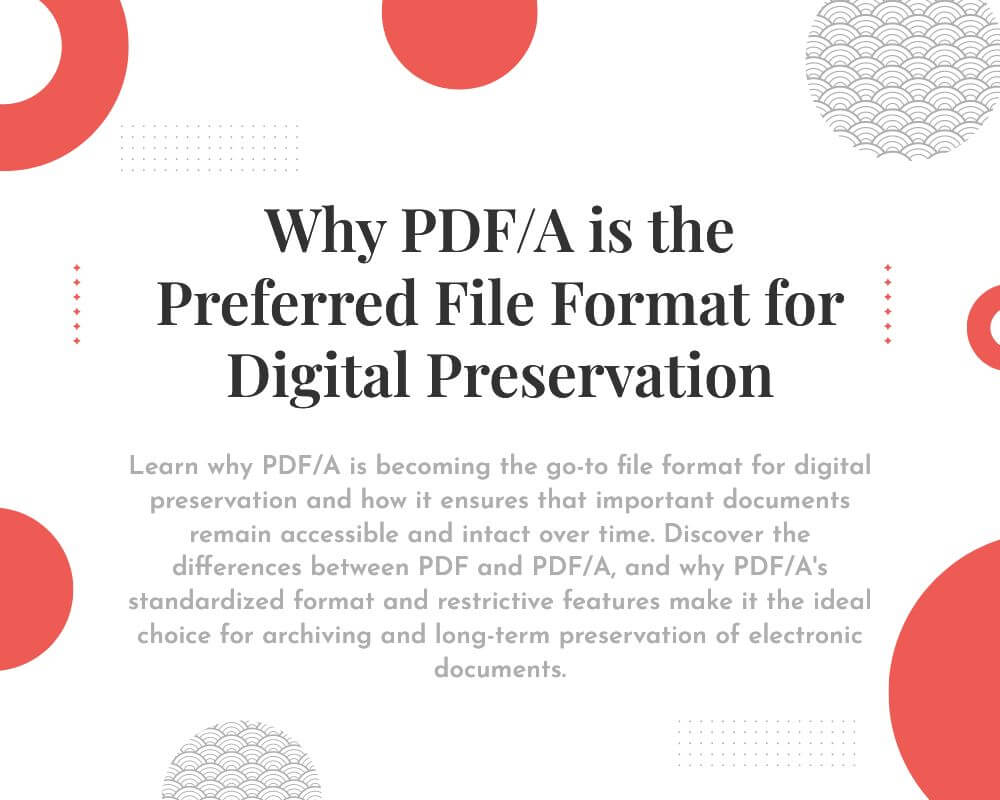
Why PDF/A is the Preferred File Format for Digital Preservation
The Importance of Archiving and Long-Term Preservation
In today’s digital world, archiving and long-term preservation are critical. Many organizations are legally required to preserve documents for a certain period of time, and in some cases, indefinitely. In addition, important historical documents and cultural artifacts must be preserved for future generations. PDF/A is an ideal format for archiving and long-term preservation because it ensures that documents remain readable and accessible over time.
Ensuring Long-Term Readability and Accessibility
One of the main benefits of PDF/A is its ability to ensure that digital documents remain accessible and readable in the long term. The standard defines specific requirements for formatting, metadata, and content, which help to ensure that the document will remain readable even if the software used to create it is no longer available. This means that documents archived in PDF/A will remain accessible and usable for future generations, regardless of changes in technology or software.
PDF/A also offers a high level of document integrity and security. The standard requires that all fonts and images used in the document be embedded, which eliminates the risk of missing fonts or images that could compromise the document’s integrity. In addition, PDF/A can support encryption and digital signatures, which help to ensure the document’s authenticity and prevent unauthorized access or modification.
Compatibility and Ease of Sharing
Another advantage of PDF/A is that it is a widely accepted standard, which means that documents archived in PDF/A are likely to be readable by a wide range of software applications and operating systems. This makes it easier for organizations to share and exchange archived documents with others, without having to worry about compatibility issues.
PDF/A can be used for archiving a wide range of documents, including contracts, financial statements, medical records, and more. In fact, many organizations are legally required to preserve documents for a certain period of time, and PDF/A is often the preferred format for doing so. In addition, PDF/A can be used for digitizing and preserving historical documents, making it possible to preserve important cultural artifacts and documents for future generations.
Comparison of PDF format with PDF/A format
Here’s a comparison list of the PDF format with the PDF/A format:
PDF Format:
- A standard file format used for sharing and storing documents electronically.
- Can be created from various software applications and is designed to look the same on any device.
- May include multimedia content, such as audio and video, that may not be supported by all devices or software.
- May not preserve a document’s content and formatting over time, making it less suitable for long-term preservation.
- Supports dynamic and interactive content, such as forms, that may not be necessary for archiving or long-term preservation.
- Does not require fonts to be embedded within the document, which may lead to missing fonts and layout issues.
PDF/A Format:
- A standardized file format designed for archiving and long-term preservation of electronic documents.
- Intended to ensure that a document’s content and layout remain intact over time, regardless of changes in technology or software.
- Only supports certain types of multimedia content, such as images and vector graphics, which can be displayed on any device or software.
- Requires that all fonts used in the document be embedded, ensuring that the document remains readable even if the original fonts become obsolete.
- Uses standardized compression algorithms that ensure that the document’s content remains intact even after being compressed.
- Does not support dynamic or interactive content, such as forms, as they may not be necessary for archiving or long-term preservation.
Overall, the main difference between the two formats is their intended use – PDF is primarily used for sharing and storing documents, while PDF/A is specifically designed for archiving and long-term preservation. PDF/A is more standardized and restrictive, ensuring that the document’s content and layout remain intact over time, while PDF allows for more dynamic and interactive content but may not be suitable for long-term preservation.
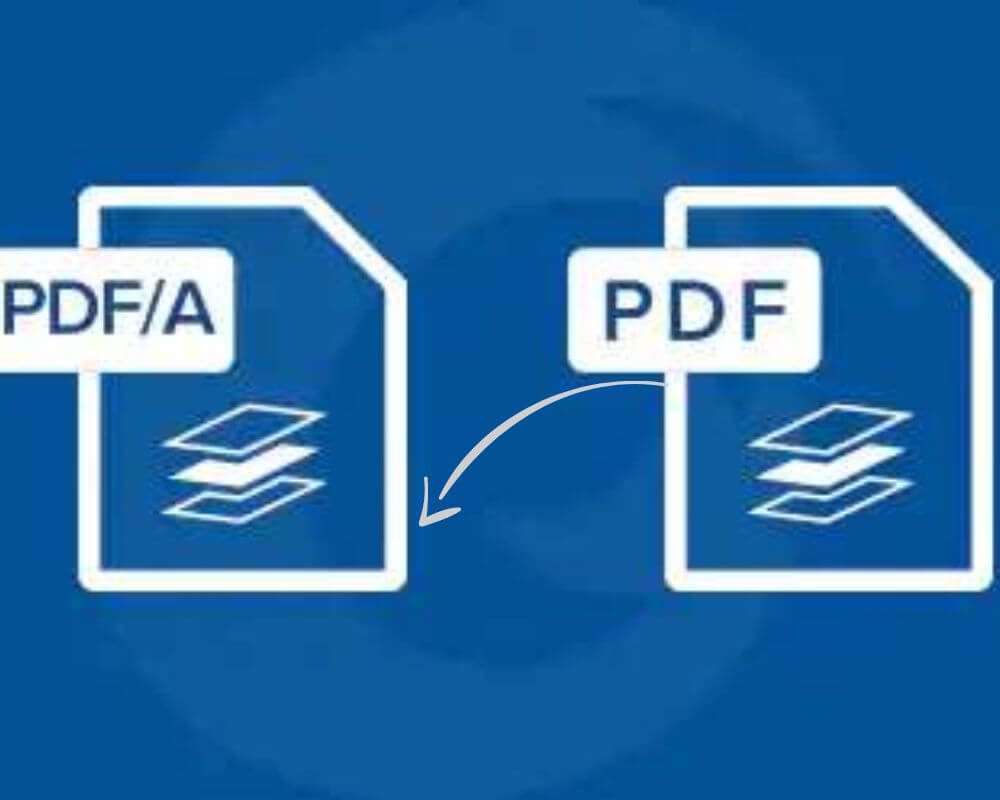
What is difference between PDF and PDF A?
Why is PDF/A preferred over pdf as a file format for digital preservation
PDF/A is a specialized file format that is specifically designed for archiving and long-term preservation of electronic documents, and it is becoming increasingly popular among organizations that need to store important files for extended periods of time.
The main reason why PDF/A is preferred over regular PDF for digital preservation is that PDF/A is specifically designed to ensure that the document’s content and layout remain intact over time, regardless of changes in technology or software.
PDF/A achieves this by requiring that all fonts used in the document be embedded, using standardized compression algorithms that ensure that the document’s content remains intact even after being compressed, and restricting certain types of multimedia content to ensure that the document can be displayed on any device or software.
In contrast, regular PDF files may not preserve a document’s content and formatting over time, making them less suitable for long-term preservation. PDF/A’s standardized format and restrictive features ensure that the document’s content and layout remain intact and accessible, making it an ideal format for digital preservation.
How to Convert to PDF/A
Converting a document to PDF/A is a relatively simple process. Most modern PDF creation software includes an option to save a document as PDF/A. The software will automatically check that the document meets the PDF/A requirements and will make any necessary adjustments to ensure that it is compliant.
If you have a large number of documents that need to be converted to PDF/A, there are also batch conversion tools available that can convert multiple documents at once. These tools can be especially useful for organizations that need to convert large amounts of data.
Conclusion
PDF/A is an important standard for archiving and preserving digital documents. Its ability to ensure long-term readability and accessibility, document integrity and security, and compatibility with a wide range of software applications and operating systems make it an ideal format for archiving and preserving a wide range of documents. With the increasing importance of digital data in our daily lives, PDF/A is likely to become an even more critical tool for archiving


